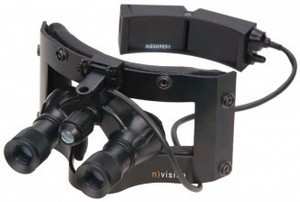Tue, Dec 21, 2010
Agency Said Many Operators May Not Be Performing Adequate
Maintenance
 The FAA released a SAFO on Dec 15 to notify operators of
aircraft equipped with a Night Vision Imaging System (NVIS) of
potential deficiencies in the configuration and condition of
installed NVIS equipment. The safety alert warns "many operators of
NVIS-equipped aircraft may not be adequately meeting the inspection
and maintenance requirements of NVISs."
The FAA released a SAFO on Dec 15 to notify operators of
aircraft equipped with a Night Vision Imaging System (NVIS) of
potential deficiencies in the configuration and condition of
installed NVIS equipment. The safety alert warns "many operators of
NVIS-equipped aircraft may not be adequately meeting the inspection
and maintenance requirements of NVISs."
NVGsafety.com - an online resource site for Night Vision Goggle
(NVG) safety and education - has posted the SAFO 10022 bulletin,
along with complementary information (NVG maintenance regulations,
articles and resources) to assist organizations understand and
respond to related night vision program management issues.
The FAA findings are the result of a recent FAA's Aviation
Safety (AVS) nation-wide sampling of NVIS-equipped aircraft.
FAA teams, made up of Flight Standards Service (AFS) inspectors and
Aircraft Certification Service (AIR) inspectors/engineers,
discovered that NVIS-equipped aircraft were frequently out of
compliance with FAA NVIS requirements.
The FAA has determined it is likely that other NVIS-equipped
aircraft may not be properly configured or maintained for NVG
operations. They determined that "the likelihood of configuration
and maintenance problems increases as aircraft continue in service
after NVIS modifications". The bulletin warns "many operators of
NVIS-equipped aircraft may not be adequately meeting the inspection
and maintenance requirements of NVISs."

Non-compliance to NVIS maintenance regulations is a critical
safety issue and failure to properly maintain an aircraft's NVIS
configuration and equipment can degrade NVG acuity and prevent the
flight-crew from clearly seeing aircraft instrumentation. As noted
in the bulletin "an aircraft that does not comply with the STC
and/or ICA requirements, or that has inoperative or improperly
maintained equipment, should not be operated until corrective
action has been taken."
The FAA SAFO maintenance bulletin outlines the primary reasons
that NVIS-equipped aircraft were frequently out of compliance and
provides key guidance on how to resolve these issues.
More News
Airplane Bounced About 3 Ft Then Touched Back Down And Then, With No Brakes Applied, The Airplane Began Veering To The Left Analysis: The pilot entered the airport traffic pattern >[...]
Aero Linx: British Microlight Aircraft Association (BMAA) The primary focus within all aviation activity is SAFETY. In all aspects of our sport SAFETY must come first, whether it b>[...]
From SnF25 (YouTube Edition): William Wynne Builds Practical Aircraft Engines on the Corvair Platform Seeking an affordable alternative to the traditional aircraft engine options, >[...]
How To Get A Story On Aero-TV News/Feature Programming How do I submit a story idea or lead to Aero-TV? If you would like to submit a story idea or lead, please contact Jim Campbel>[...]
From 2023 (YouTube Edition): Bridge of CiES CiES Inc. is a Bend, Oregon-based designer and manufacturer of modular embedded aircraft systems and sensors. The company’s fuel-l>[...]
 NTSB Final Report: Aviat A1
NTSB Final Report: Aviat A1 ANN's Daily Aero-Linx (07.08.25)
ANN's Daily Aero-Linx (07.08.25) Classic Aero-TV: Fly Corvairs Reliable Engine Alternative
Classic Aero-TV: Fly Corvairs Reliable Engine Alternative ANN FAQ: Contributing To Aero-TV
ANN FAQ: Contributing To Aero-TV Classic Aero-TV: CiES Fuel-Quantity and e-Throttle Systems Praised
Classic Aero-TV: CiES Fuel-Quantity and e-Throttle Systems Praised




